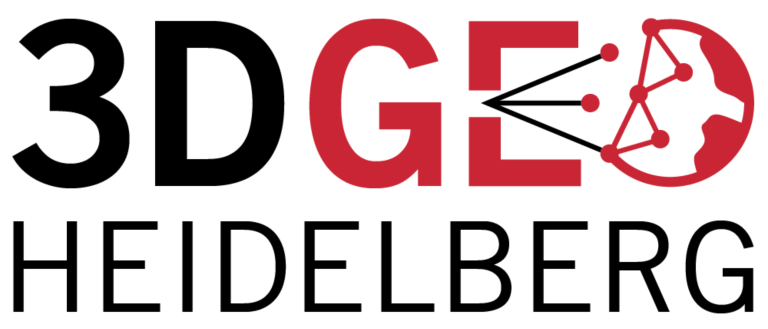GIScience News Blog
-
Usage of HELIOS for various applications
The Heidelberg LiDAR Operations Simulator (HELIOS) is an open source laser scanning simulation framework for interactive simulation and visualization of terrestrial, mobile and airborne laser scanning surveys. It can be flexibly used for teaching and training of laser scanning, development of new scanner hardware and scanning methods, or generation of artificial scan data sets to…
-
Letzte Vorbereitungen: Start der MS Wissenschaft am 16. Mai 2019
Mitmach-Exponate direkt aus der Forschung geben in der Ausstellung auf der MS Wissenschaft 2019 Einblicke in die Entwicklung und Anwendung Künstlicher Intelligenzen (KI). Die MS Wissenschaft startet ihre Tour am 16. Mai 2019 in Berlin und besucht Ende August auch Heidelberg. Das Exponat „Mensch Maschine – Forschung im Team“ zeigt wie Trainingsdaten für KI-Algorithmen erstellt…
-
How to become ohsome part 5: Measuring numbers of users editing different OSM features
Besides dealing with a snake, making quality assessments, or generating comparable statistics, one needs to know how to handle the whole functionality provided by the ohsome API to really become ohsome. And to achieve exactly that, this blog presents the last missing entry point to the API from the current toolkit, namely the /users resource. With its help you can receive aggregated…
-
HeiGIT/GIScience at Global Platform for Disaster Risk Reduction and Multi Hazard Early Warning Conference
Middle of May, Geneva becomes the gathering place for citizens, political leaders, government institutions, private sector, civil society, and scientific and technical institutions, that all jointly work towards a big objective – to manage disaster risk. In line with the Sendai Framework, the conference is focusing on and strengthening the shift from the management of…
-
Colloquium on Laser Scanning for Forestry Applications
We cordially invite everybody interested to our next open GIScience colloquium talk The speaker is Moritz Bruggisser TU Wien, Department of Geodesy and Geoinformation, Photogrammetry Division When: Monday 06.05.2019, 2:15 pm Where: INF 348, room 015 (Institute of Geography, Heidelberg University) Multi-scale laser scanning for forestry applications Airborne laser scanning (ALS) has been used for the derivation…
-
Guest Scientist Prof. Dr. Jochen Albrecht at GIScience Research Group
This summer term, the GIScience research group at Heidelberg University has the honour of hosting Prof. Dr. Jochen Albrecht as a guest scientist. We are very pleased to welcome Jochen to Heidelberg and to our research group! Dr. Jochen Albrecht is a professor for Computational and Theoretical Geography at Hunter College in New York City.…
-
Landcover monitoring with emphasis on vegetation under the climatic change pressure using multitemporal and multisource remote sensing data fusion
The new project on landcover monitoring with emphasis on vegetation under the climatic change pressure using multitemporal and multisource remote sensing data is a collaboration project funded in the framework of 4EU+ Flagship 4: Biodiversity and Sustainable Developement with Markéta Potůčková (Department of Applied Geoinformatics and Cartography, Charles University Prague) as PI of the project.…
-
MapSwipe for Change Detection Analysis
The Humanitarian OpenStreetMap Team (HOT) , the Heidelberg Institute of Geoinformation Technology (HeiGIT) , and the wider MapSwipe Community started working on an MapSwipe extension to monitor changes in satellite imagery. The goal of the two-month project is to extend the app with new functionalities that would allow the users to compare two satellite images…
-
Start of HCE’s series of talks on “Changing Climate”
The Heidelberg Center for the Environment‘s public series of talks “Heidelberger Brücke” is starting today! This semester’s topic is “Changing Climate”. Today, Prof. Dr. Birgit Schneider, University of Potsdam, Department of Arts and Media, speaks in German about the role of images in communication of climate change: “Klimabilder. Die Rolle der Bilder für die Kommunikation des…
-
Colloquium on Suburban Global Greenhouse Gas Emissions
We cordially invite everybody interested to our next open GIScience colloquium talk The speaker is Dr. Jochen Albrecht Professor for Computational and Theoretical Geography, Hunter College, City University of New York When: Monday 29.04.2019, 2:15 pm Where: INF 348, room 015 (Institute of Geography, Heidelberg University) The Geography of Suburban Global Greenhouse Gas Emissions The common…
-
OSHDB: a framework for spatio-temporal analysis of OpenStreetMap history data
Earlier we published several blogposts introducing the ohsome platform and its parts (e.g. the ohsome API for example, which was often showcased here in the blog) and its backbone the OSHDB (very recently version 0.5 was published). A recent open access journal article gives even more background to the system, as shown below: Raifer, M,…
-
Projekt “TARDUR” startet: Open-Source-Routenplanung mit zeitabhängigen Beschränkungen
Zeitabhängige Sperrungen und Nutzungsbeschränkungen von Straßen werden bislang in keiner frei verfügbaren Software zur Routenplanung genutzt. In dem im März gestarteten Projekt “TARDUR – Temporal Access Restrictions for Dynamic Ultra-Flexible Routing” gehen die Universität Heidelberg und die Firma GraphHopper dieses Problem an. Das Projekt wird im Rahmen der Förderrichtlinie Modernitätsfonds (“mFUND”) mit insgesamt 100.000 Euro…
3D 3DGEO Big Spatial Data CAP4Access Citizen Science Climate Change Conference crisis mapping Crowdsourcing data quality deep learning disaster DisasterMapping GIScience heigit HELIOS HOT humanitarian humanitarian mapping Humanitarian OpenStreetMap team intrinsic quality analysis landuse laser scanning Lidar machine-learning Mapathon MapSwipe Missing Maps MissingMaps ohsome ohsome example Open data openrouteservice OpenStreetMap OSM OSM History Analytics Quality quality analysis remote sensing routing social media spatial analysis Teaching VGI Workshop


